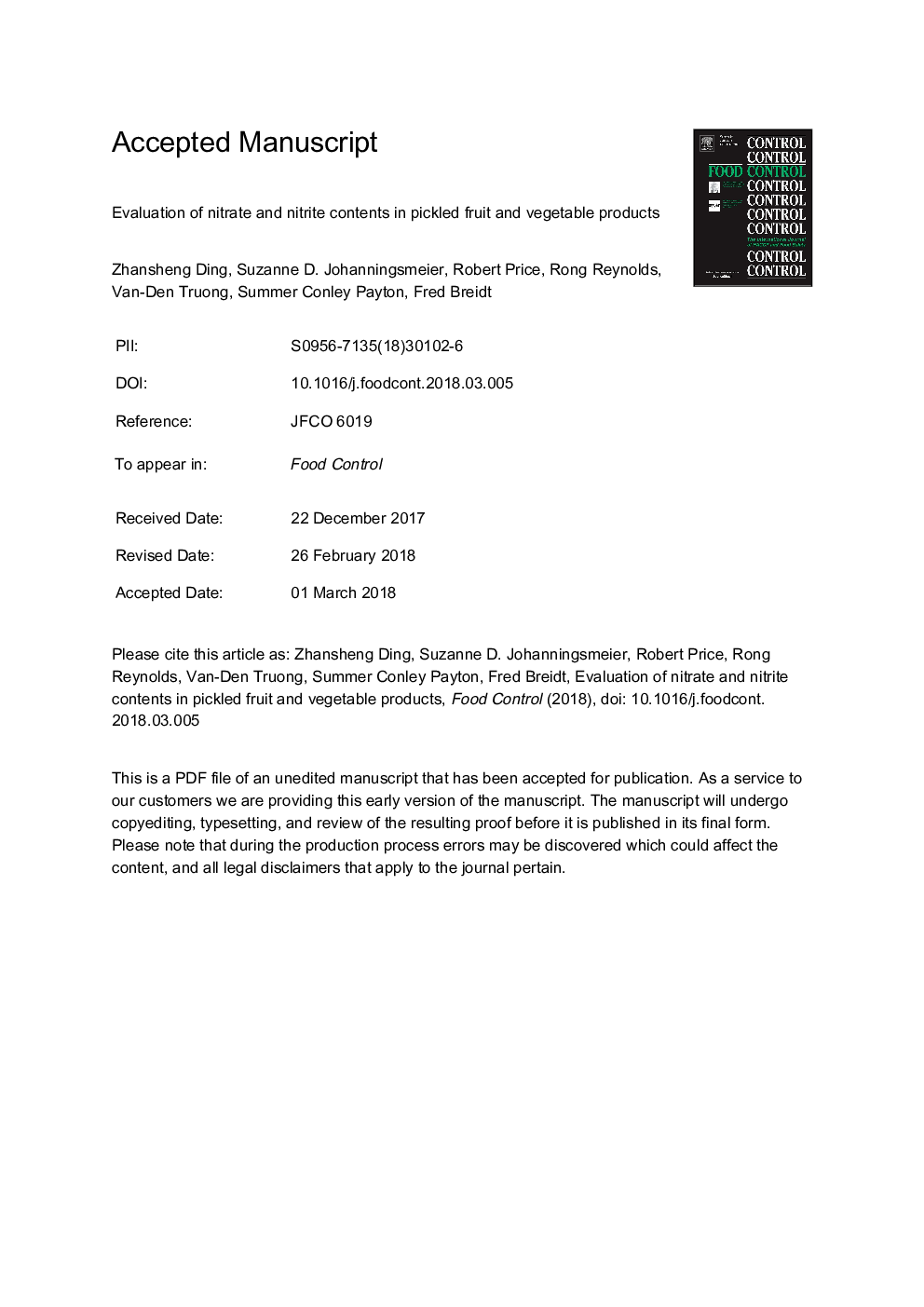| Article ID | Journal | Published Year | Pages | File Type |
|---|---|---|---|---|
| 8888001 | Food Control | 2018 | 33 Pages |
Abstract
Our objective was to investigate nitrate and nitrite contents of acidified and fermented fruits and vegetables. l-ascorbic acid and total phenols were also examined based on the hypothesis that the presence of these antioxidant compounds may influence N-nitrosation reactions upon human consumption. The fermented and acidified vegetable products included 131 samples from multiple lots of 46 different commercially available products. Nitrite was detected in low concentrations (<1.5 mg/100â¯g) in four acidified (pickled green beans, red cabbage, pickled beets, and pickled mushrooms) and two fermented products (Greek olives and kimchi). Nitrate concentrations ranged from a mean value of 122 mg/100â¯g for kimchi to undetectable levels in acidified Brussels sprouts. Measures of antioxidant compounds showed that artichoke hearts had the highest total polyphenols (225 mg/100â¯g), and olive products had between 84â¯Â±â¯5 mg/100â¯g (Spanish table olives) and 170â¯Â±â¯8 mg/100â¯g (Greek olives). An acidified red pepper product had the highest l-ascorbic acid content of 32â¯Â±â¯10 mg/100â¯g, with a low nitrate level of 0.1â¯Â±â¯0.09 mg/100â¯g. These results provide new information for evaluating nitrate and nitrite contents in pickled fruit and vegetable products with regard to potential human dietary health consequences.
Related Topics
Life Sciences
Agricultural and Biological Sciences
Food Science
Authors
Zhansheng Ding, Suzanne D. Johanningsmeier, Robert Price, Rong Reynolds, Van-Den Truong, Summer Conley Payton, Fred Breidt,
